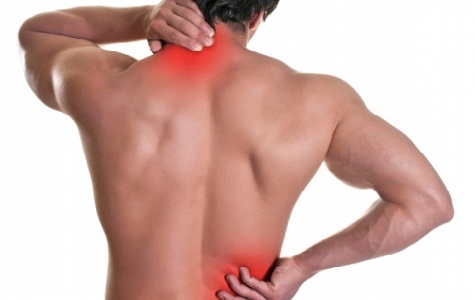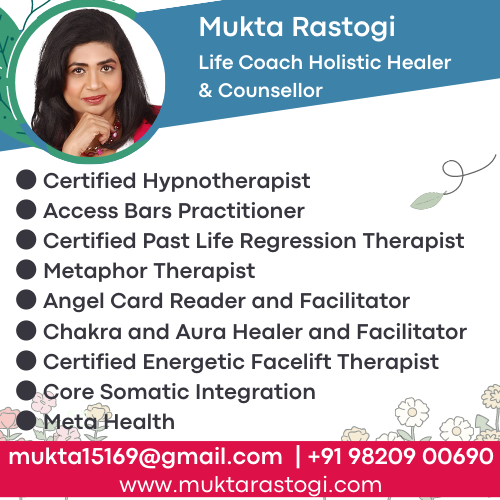Alternative Therapies
- Alternative Medicine
- Access Bars
- Access Consciousness
- Acupressure
- Acupuncture
- Akashic Records
- Ancestral Healing
- Ancient Magnetism
- Angel Healing
- Aura Reading
- Ayurveda
- Bach Flower Remedies
- Breathwork
- Cosmetic Acupuncture
- Crystal Healing
- Cupping Therapy
- Emotional Freedom Technique (EFT)
- Energy Healing
- Energy Medicine
- Ergonomics
- Family Constellation
- Face Reading
- Fengshui
- Geopathic Stress Graphology
- Heal Your Life
- Holistic Solutions
- Holy Fire Reiki
- Homeopathy
- Hypnotherapy
- Lama Fera
- Jikiden Reiki
- Law of Attraction
- Manual Therapy
- Meditation
- Melchizedek Method
- Merlin Trinity Healing
- Motivational Counseling
- Mudra Healing
- Nadi Vaidya
- Naturopathy
- Neuro Linguistic Programming (NLP)
- Numerology
- Panchakarma (Ayurveda)
- Past Life Regression
- Physiotherapy
- Pranic Healing
- Pyramids
- Quantum Touch Healing
- Reiki
- Rudraksh
- Silva Mind Control Method
- Sound Healing
- Star Magic Healing
- Sujok therapy
- Symphony of Possibilities
- Tarot
- Theta Healing
- Unani Medicine
- Violet Flame Healing
- Yoga
Diseases & Conditions
- Acne & Pimples
- Allergies
- Arthritis
- Asthma
- Behavioural Disorders
- Dandruff
- Diabetes
- Emotional Problems
- Gallstones
- Gastritis
- Hairloss
- Heart Diseases
- Hormonal Problems
- Hypertension
- Immune Disorders
- Infections
- Infertility
- Jaundice
- Kidney Disorders
- Liver Disorders
- Menstrual Disorders
- Migraine
- Neck & Back Pain
- Obesity
- Osteoporosis
- Peptic Ulcer
- Prevention
- Prostate Problems
- Psoriasis
- Sexual Dysfunctions
- Sinusitis
- Sleep Disorders
- Skin Diseases
- Stress
- Thyroid Disorders
- Ulcerative Colitis
- Urinary Infections
General Wellness
Neck and Back Pain Treatment in Amritsar
Healy Frequency Healing Device

Wellness and well-being principles revolve around maintaining the balance between the mind, body and soul. Healy is the only device on the planet earth for balancing between Body, Mind and Soul.


Ms. Mukta Rastogi
Mukta Rastogi is a Life coach, Counsellor, Certified Hypnotherapist, Access Bars Practioner, Certified with Dr Brain Weiss in Past Life Regression, trained in Metaphor Therapy and Angel Card Reader. She is Proactive and dynamic spiritual healer.

Ms. Archana Kabilan

Archana Kabilan, a Bach Foundation Registered Practitioner (BFRP) (UK), offers a blend of Bach flower services in support of stress management by reducing stress and promoting relaxation to enhance wellness.


What Can Physical Therapy Do For Your Back and Neck Pain
What is physical therapy?
Physical therapy is the science of blending physiology with exercises and applying these principles to the body when an injury is sustained. Physical therapy for back and neck conditions focuses on the structures that support the spine and its joints including muscles, tendons, and ligaments. Goals of physical therapy
There are five main goals of physical therapy, as described below:
To educate patients on the principles of stretching and strengthening, which will in turn, help manage pain and accelerate tissue healing. To educate patients on proper posture and ergonomic principles to preserve the spine. To accelerate the stages of healing, which focus on:- Reducing pain and the inflammatory cycle
- Apply passive modalities only if severe: ice/heat/ultrasound/traction/electrical stimulation
- Educate regarding posture and resting in neutral position
- Restoring muscular flexibility, joint mobility, and spine motion
- Introduce specific stretching exercises and progressions to abolish pain and stiffness to specific regions with high frequency and repetitions
- Strengthening the involved muscles
- Teach how to maintain the new postures
- Returning to normal activities
- Create new awareness of body mechanics and daily stretching for life
- Studies show that 90 percent of the population experience spine symptoms at least once in lifetime.
- Many people have neck and back pain, but it is not always isolated to those regions. The pain can also travel into arms or head/eyes as well as radiate into the gluts, groin, hip and legs/feet.
- Each episode of back stiffness and pain can become progressively worse and last longer and travel farther from its origin.
- If you don't stop the cycle and figure out the cause of each episode, accumulation of damage to structures lead to eventual failure of the spinal structures. At this stage, physical therapy alone will not be effective. You will need more extensive intervention with spine doctors, pain management, or possibly a surgeon.
- If the symptoms were addressed early, 95% of herniated disc patients would NOT require surgery.
Overall, you need to maintain good posture throughout all of your daily activities. If you start to feel sore or stiff, change your posture and modify your body mechanics. Your body will warn you - using pain as a signal - when your body mechanics are improperly aligned. However, many times we choose to ignore these signals in order to complete the project, paper, book, etc. By not listening to your body, sometimes it is too late and the inflammatory process is initiated. The best way to avoid pain is to learn to listen to your body.
- Sit up straight! It feels better and puts the least amount of strain on your spine! If you sit or bend too often or for too long a period of time, bend in the opposite direction to balance the stresses out and relieve muscle tension.
- More on sitting: When sitting, arch your back 5 to 10 times if you feel stiff. Repeat two to three times a day (or more often if you are sore).
- Other stretching exercise to do at your desk: shoulder rolls backwards x 10 shoulder blade squeeze x 10 chin in x 10 chin in & slowly stretch head back x 10 head turn over shoulders x 10 each way standing back bend stretch x 10
- Strengthen and reeducate your postural muscles so that you can endure your daily activities. Although it takes more muscular and mental effort, create this new awareness and develop this new habit.
- Regular stretching of upper and lower cervical spine allows good posture to be maintained with little effort.
- Simply put, use your postural muscles! Don't just wear them. Think chest out, chin in, stomach tight with standing, walking, lifting and bending.
- Standing: Keep one foot in front of and more elevated than the other when working in a cupboard, ironing, washing dishes, or even standing at work.
- Sitting: Use lumbar support in car and/or chair or adjust car seat to upright. Sitting up straight puts the least amount of stress on the spine. It may take more muscular and mental effort but it is wise to create this new awareness and habit!
- Sleeping while lying on the side: Keep the bottom leg straight; top leg can be bent or rested on pillow.
- Bending: Use golfer's lift or 1/2 kneeling position when putting dishes in dishwasher, getting laundry out of washer, putting items into trunk/cart, etc.
- Lifting: Keep the object being lifted close to you; get down under it.
- Sleeping: Get into a neutral position, either on your back (use 1 pillow) or side (use 1 pillow). Avoid lying on your stomach if you have neck pain. When lying on your side, make sure your head is positioned such that you are looking ahead, not down at your feet. Contour pillows are good to use (though they take some time to get used to), or you can use pillows that incorporate a cervical roll.
- Driving: Stay upright with your head against the headrest and straighten arms out to keep shoulders back. Tilt rearview mirror a bit toward the roof so that an upright posture is necessary to maintain the total field of vision in the mirror.
- Using a computer: Screen should be positioned at eye level, with head back and chin in. Sit back in chair and use a lumbar roll. Use attached arm on monitor or other device to hold documents at eye level.
- Reading: Don't read in bed. Often, too much head flexion is created if pillows are bunched up behind the head. Instead, sit with your back against the headboard or in a chair next to the bed.
- Enjoying hobbies: For counter- or lap-based hobbies such as quilting, sewing, collecting items in albums, etc., don't continuously look down for long periods of time without taking a break. Change your physical position and stretch in the opposite direction about every 20 minutes.
- Gardening: Don't do marathon gardening sessions. Take frequent breaks. Half kneel or squat when working.
- Cleaning: When possible, half kneel or squat to keep spine in a neutral position.
- Watching television: Sit up straight in the chair or on your couch. Don't slouch. Get up periodically and walk around.
- Overall, bad posture results in more wear and tear on the spinal structures.
- After age 30, all the years of straining the normal tissue from slouching eventually decreases structural stability, allowing for greater wearing down of ligaments.
- Postural misalignment can cause radiating pain away from the back and spine due, for instance, to a pinched nerve; and muscle spasms can create headaches and neck/scapular pain.
- Pain often begins as a soreness or stiffness in the neck and shoulder blades and can progress to headache pressure and band-like symptoms around head and/or back tightness that can progress to the hip, leg, and toes.
- Many factors contribute to the onset of pain, including job duties, hobbies
To prevent future occurrences. As you are able to maneuver through episode of back or neck pain, learn what program is needed to deter relapses.
To manage exacerbations. No matter how diligent you are, you are bound to have a forgetful moment, do an activity improperly and so suffer flare up, but new knowledge will help eliminate symptoms in a couple days, instead of suffering for weeks or months.
Prevalence of pain
Action plan: What you can do?
A physical therapist can make sure you are prescribed the appropriate exercises for your condition, and can modify the exercise as necessary. NOT all patients require referral from a physician for an evaluation to be seen by a physical therapist in the state of Ohio. You can check with your insurance company to see if a physician's referral is required. If a referral is not required you may be seen directly by the Physical Therapist.
Ergonomic tips
Remember that chronic poor posture causes a loss of flexibility in the major muscle in front of the shoulders (i.e., the pectoralis major muscle), decreases the mobility of the cervical spine, and causes loss of strength of the scapular muscles, making it nearing impossible to maintain good posture, even if asked to do so.
Optimal body positioning to decrease neck and back pain
Why is posture so important?
The three natural curves of the spine plus the discs in the spine help absorb the "shock" or "forces" of everyday life. Jobs or tasks that require bending forward all day (in addition to the 3,000 and 5,000 times a day we ordinarily bend forward), decrease the natural curves of the spine, resulting in more stress being placed on the back side of ligament and joints of cervical and lumbar spine.





